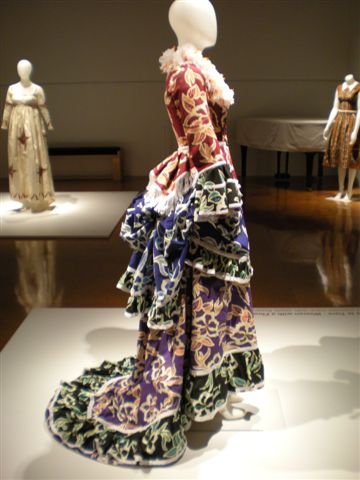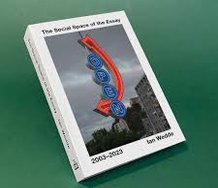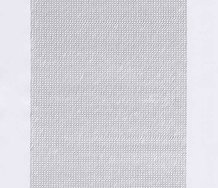Andrew Paul Wood – 10 August, 2010
The works explore different aspects of European/Pasifikan interaction. Vahine no te Tiare - Woman with a Flower and Te Arii Vahine - The Noble Woman, for example, are from The Gauguin Suite (2001) take their titles, and perhaps their palettes, from the Tahiti paintings of Gauguin. Referencing leis and lava-lava fabric, the garments explore the clichés and stereotypes that Europeans have invented of Pacific peoples out of an obsession with the ‘exotic' and the ‘other'.
The South Island is blessed with three provincial galleries that punch well above their weight with ambitious programming: the Forrester in Oamaru, the Ashburton Art Gallery, and the Aigantighe in Timaru. The latter recently put on Vahine, an exhibition of work by Jo Torr, loaned by the Mark Hutchins Gallery in Wellington.
Torr, born in Te Awamutu, brings a varied range of experiences to her work, having trained as a graphic designer, worked as a carpet designer at Feltex Carpets, and graduating from Elam in 1988. She also has post-grad qualifications in Librarianship, Museum Studies and Fashion. She currently lives in Wellington where she works as a registrar at Te Papa.
Torr’s work uses costume as a matrix within which to explore the historical relationship between Europeans and Polynesians in the Pacific. To call it “wearable art” creates the wrong impression, suggesting something quirky and superficially entertaining, which these are not. Clothing in this case is something to anchor ideas and meaning to a tangible three dimensions; their wearability is almost entirely irrelevant.
The gowns in Vahine (‘woman’ in Hawaiian) resemble those fashionable in Britain during the ‘Romantic’ phase of European exploration of the Pacific, roughly from the mid eighteenth (the time of Captain Cook) to the mid nineteenth centuries. Each is meticulously crafted, exquisitely detailed, sculptural and almost certainly could teach New Zealand’s fashion industry a thing or two about distinctive Pacific identity.
The works in the exhibition are taken from individual suites that explore different aspects of European/Pasifikan interaction. Vahine no te Tiare - Woman with a Flower and Te Arii Vahine - The Noble Woman, for example, are from The Gauguin Suite (2001) take their titles, and perhaps their palettes, from the Tahiti paintings of Gauguin. Referencing leis and lava-lava fabric, the garments explore the clichés and stereotypes that Europeans have invented of Pacific peoples out of an obsession with the ‘exotic’ and the ‘other’.
Ōkalani and Uelingatone (Tongan for Auckland and Wellington respectively) come from Nu’u Sila (2002) embody the immigration of Pasifikan peoples to New Zealand in search of better-paid employment, higher education and other opportunities and the resulting changes in both the Islands and here. Such was the radical demographic shift in Auckland, for example, it is not only the de facto capital of Polynesia, but is also in many ways more obviously “Pasifikan” than Māori in its visual identity.
From Pai’i ki’l (Hawaiian for photography, 2003) come Noble Savage and Dusky Maiden return to the idea of the “European Gaze”. Noble Savage is printed with iconic historical images of Polynesian men from the colonial period, and Dusky Maiden does the same for women. The technique is reminiscent to that used by Ruth Watson in her Without Parachute installation at The Physics Room, Christchurch in 2002.
The works from Transit of Venus (2004) coincide in creation with the occurrence of this rare celestial event in the early years of this century, and adopt the style in vogue at the time of the transit before that in 1769, which Cook voyaged on the Endeavour to record. The fabrics represent the red cloth Cook gave as a gift to the Tahitians, and the tapa bark cloth (here embroidered) the Tahitians presented in return. The gowns are metaphors for the cultural exchange between the two cultures, as do Huahine and Bora Bora from the Society Islands suite (2008). The style represents that worn circa 1798-1810, the demure, high-waisted, loose fitting and yoked so called “Mother Hubbard” - holokü in Hawai’i and ahu mama rü’au (grandmother dress) or ahu tua (empire dress) forced by missionaries upon the Tahitians to cover their tempting near-nakedness.
Timaru is a rather intriguing backdrop for this exhibition as it doesn’t immediately spring to mind as a consciously Pacific-oriented place, but the Aigantighe makes excellent use of its large temporary exhibition space to show these charming works to their best advantage.
Andrew Paul Wood
Recent Comments
Roka Ngarimu-Cameron
Dear Andrew, I am the artist that you profiled in your December article on my Canterbury Museum exhibition (see the ...
Andrew Paul Wood
It has been pointed out to me that I perhaps should have mentioned the work of Anglo-Nigerian artist Yinka Shonibare ...








 Advertising in this column
Advertising in this column Two Rooms presents a program of residencies and projects
Two Rooms presents a program of residencies and projects



This Discussion has 2 comments.
Comment
Andrew Paul Wood, 4:05 p.m. 16 August, 2010 #
It has been pointed out to me that I perhaps should have mentioned the work of Anglo-Nigerian artist Yinka Shonibare because of his use of kente cloth in elaborate ironic tableaux of historical paintings. The thought had occured to me, but the connection is a weak one as Torr doesn't make the same pretexts to tableau or installation in the same way - there is no narrative beyond the dresses themselves.
Roka Ngarimu-Cameron, 8:22 a.m. 22 August, 2010 #
Dear Andrew, I am the artist that you profiled in your December article on my Canterbury Museum exhibition (see the old eyeCONTACT. Ed.). Thank you for your outstanding comments. I would have responded sooner, had I known of your article's existence. Fortunately, I stumbled across your article today whilst researching for the purposes of my involvement in the annual Fiji Hibiscus Festival. God Bless Arohanui Roka.
Participate
Register to Participate.
Sign in
Sign in to an existing account.